8W Science - fun with experiments post exams
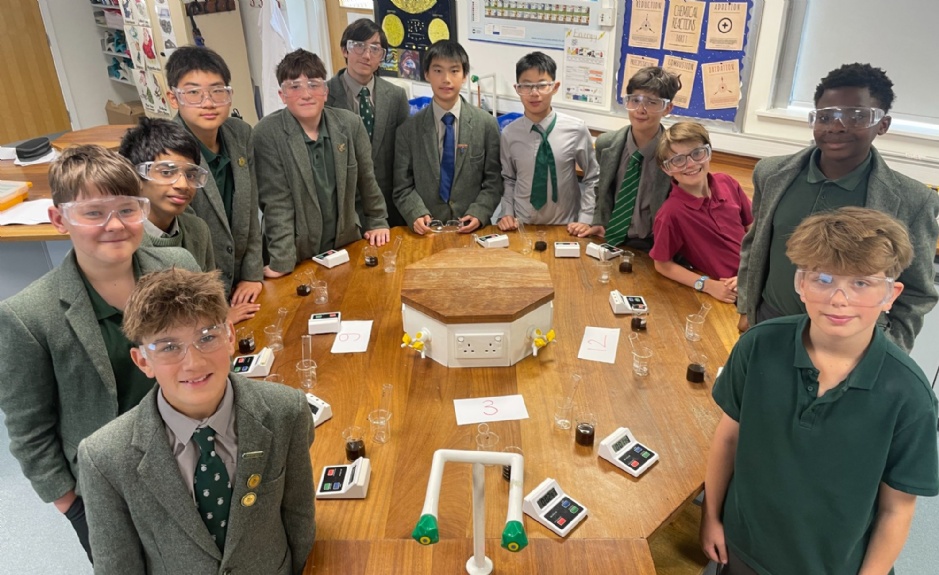
Since finishing their Winchester Entrance exams, 8W and I have been having some fun in Science, looking at designing rockets to go to Mars, as well as doing some interesting practical experiments.
No 1 Blue Bottle
We looked at the ‘Blue Bottle’ reaction. I asked 8W to explain what could be happening in the reaction between an alkaline solution of glucose and methyl blue as it turned from colourless to blue and back to colourless again, numerous times, when it was shaken in a closed conical flask.
Happily, they came up with the correct answer: it is a redox reaction, with methyl blue acting as a catalyst, of course. And now, onto the preparations for the ‘Elephant’s Toothpaste’ and the ‘Iodine Clock’ experiments… Get those thinking caps on, 8W!’
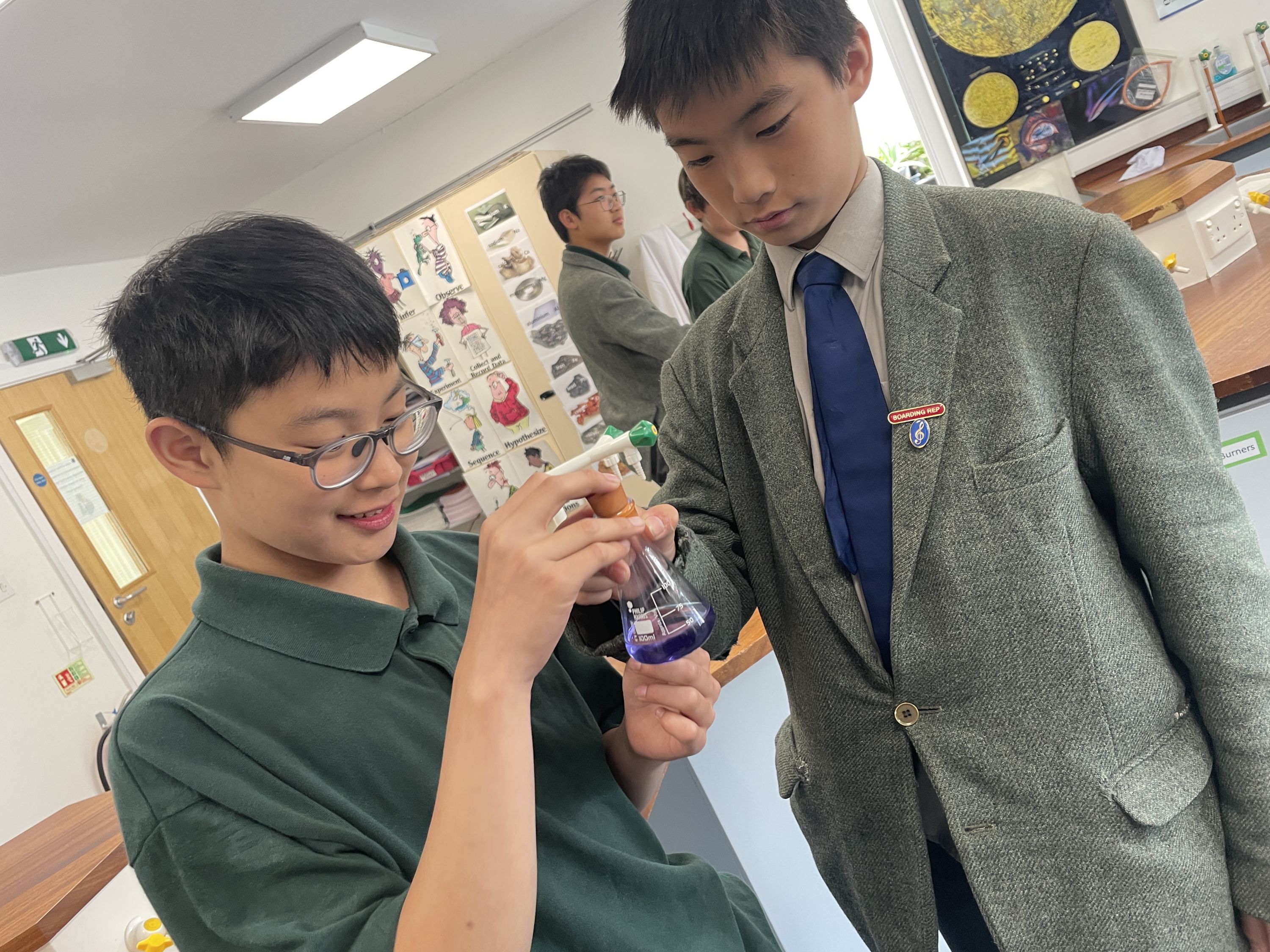
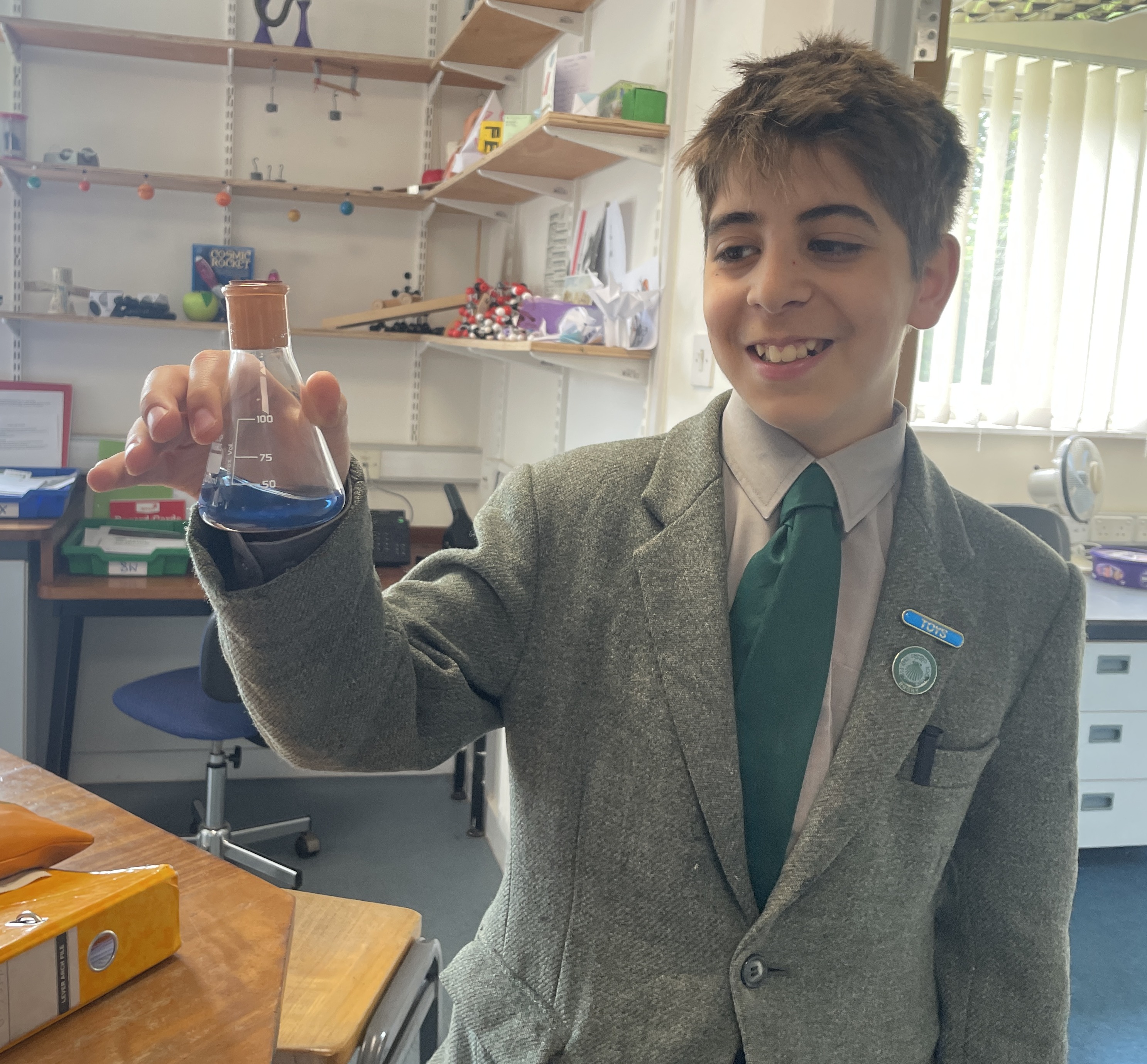
No 2 Elephant Toothpaste
What happens when you add potassium iodide to a mixture of washing-up liquid and hydrogen peroxide? You get the production of ‘elephant toothpaste’, so called, because the chemical reaction produces a large foamy mess that looks like toothpaste squirting out of a tube, which is so big that only an elephant could use it.
“But what is really happening?”, I asked 8W. And so, we batted back and forth about ideas of thermal decomposition, catalysts, oxygen, volume, exothermic reactions, water, concentration, foam until arriving at the perfect explanation. Which, of course, is that the catalysed decomposition of hydrogen peroxide is a highly exothermic reaction producing large amounts of oxygen (positively correlating to the concentration of the hydrogen peroxide) which form foam as the oxygen bubbles become trapped in the soapy solution, thus foaming out of the flask (see photo for completed reaction).
Now, just to check if your boys have been listening, you could ask them what other product is formed, and how they would test the gas produced is oxygen?!

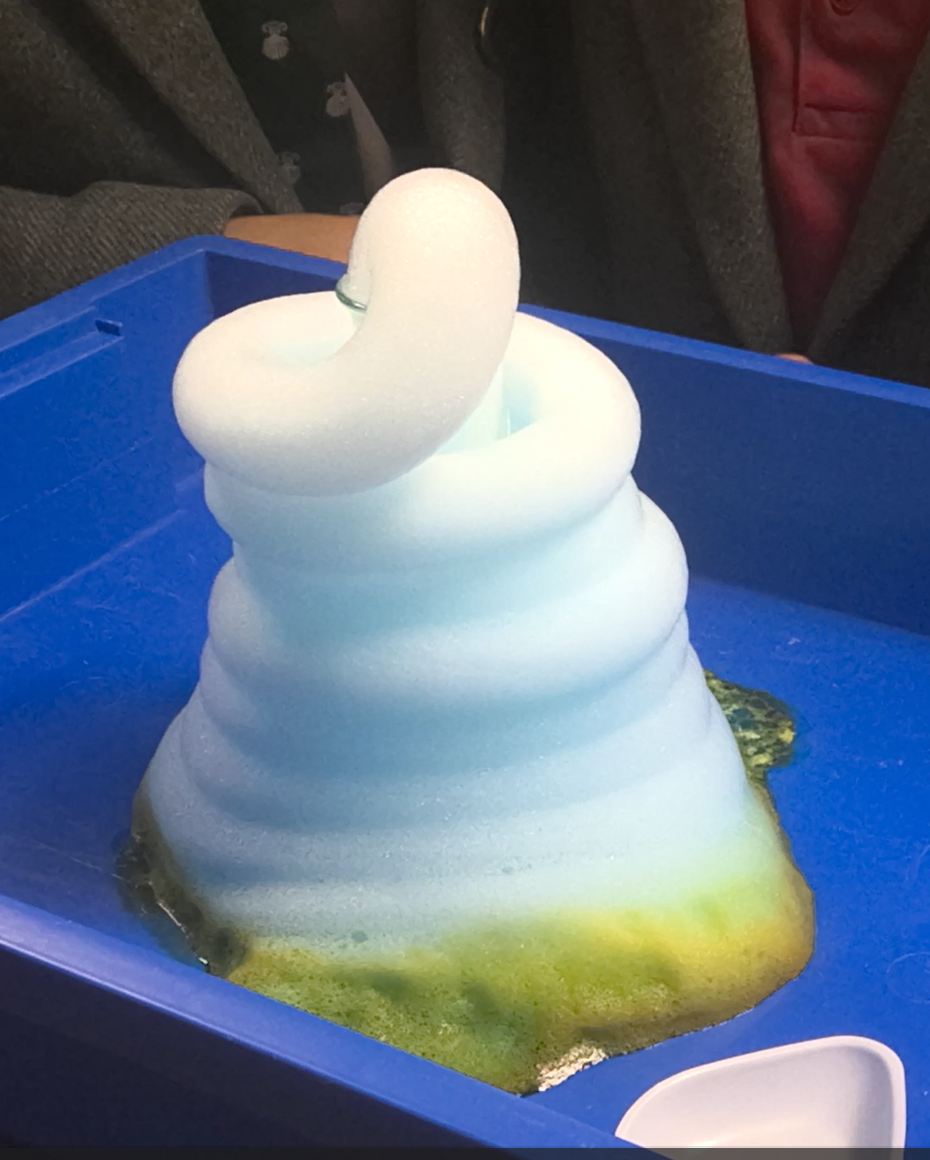
No 3 The Iodine Clock Reaction
So what did 8W see this week? Well, it was something called the ‘Iodine Clock Reaction’ which was discovered by Hans Heinrich Landolt in 1886, and is a classical demonstration experiment that displays chemical kinetics in action. Two solutions are mixed, and at first there is no visible reaction, but after a short time delay, the liquid suddenly turns dark blue-black due to the formation of a triiodide-starch complex. Depending on the amount of one of the chemicals present, thiosulphate, the sudden turning of the white liquid to blue-black can be controlled.
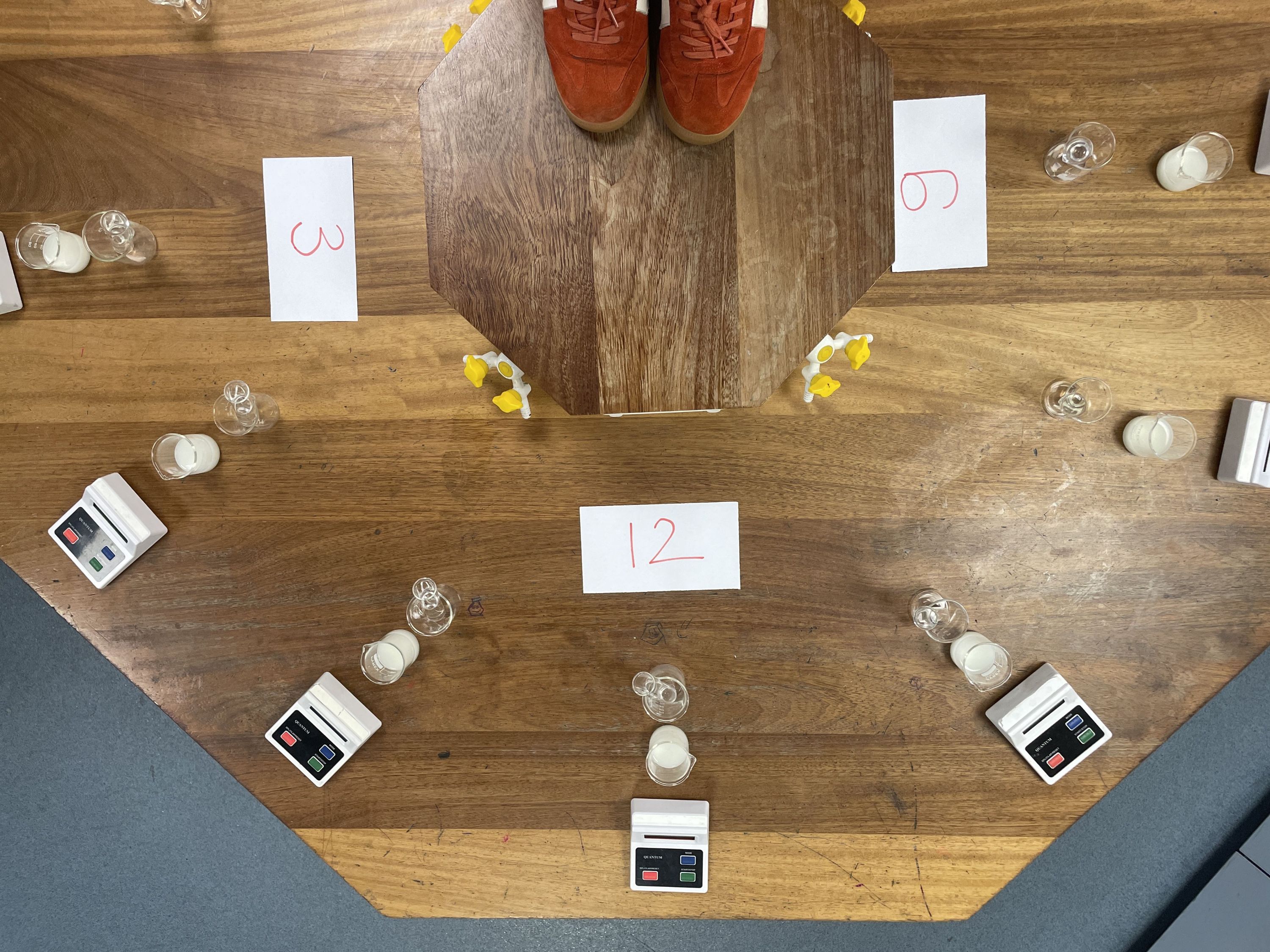
We set our experiment up in the form of a clock-face and the idea was to see 1 change the quickest, and 12 the slowest. Whilst this worked perfectly in rehearsal, the reaction times were much too quick to see the varying delays on a hot Monday morning in S2. But this only presented us with the perfect opportunity to discuss why this may have happened – which – of course – was the differing conditions of the control variables, namely temperature! As all of 8W were able to tell me, an increase in temperature results in an increase in the rate of the reaction. Well done, again, 8W!
 Watch the video here:
Watch the video here:
https://vimeo.com/1091155857?ts=0&share=copy
(password to view video is: shell)
The photos will show you the start and end of the demonstration, but if you’d like to see what might have happened, do watch the short clip at this link: Iodine Clock Reaction Timed to Tchaikovsky's Russian Dance from The Nutcracker.
No 4 Northern Lights or Dancing Flame Experiment
The final experiment in the series is one using aluminium, hydrochloric acid, and copper chloride. (Their designs of rockets to get them to Mars has also been great to see progressing).
A simple displacement reaction, they worked out, demonstrating the reactivity of metals. The answers to my questions came thick and fast; ‘what is the gas?’, ‘what else is produced?’, ‘why?’. All were answered correctly and with textbook efficiency, as I recall from Dami, Max, Finn and Yashk. This experiment is called the Northern Lights or Dancing Flame experiment, and it is clear to see why. It is so very beautiful; when the hydrogen gas produced is lit, it burns with a blue-green flame which dances around looking like the aurora borealis, due to the aerosol of copper ions being released from the bubbling mixture of chemicals.
I have been so impressed by all of 8W for how they have explored this series of experiments. And now, with the end of CE exams, it is on to the Year 8 Leavers’ Programme. Which brings my Science lessons with 8W to a close. I will miss you, 8W – really!
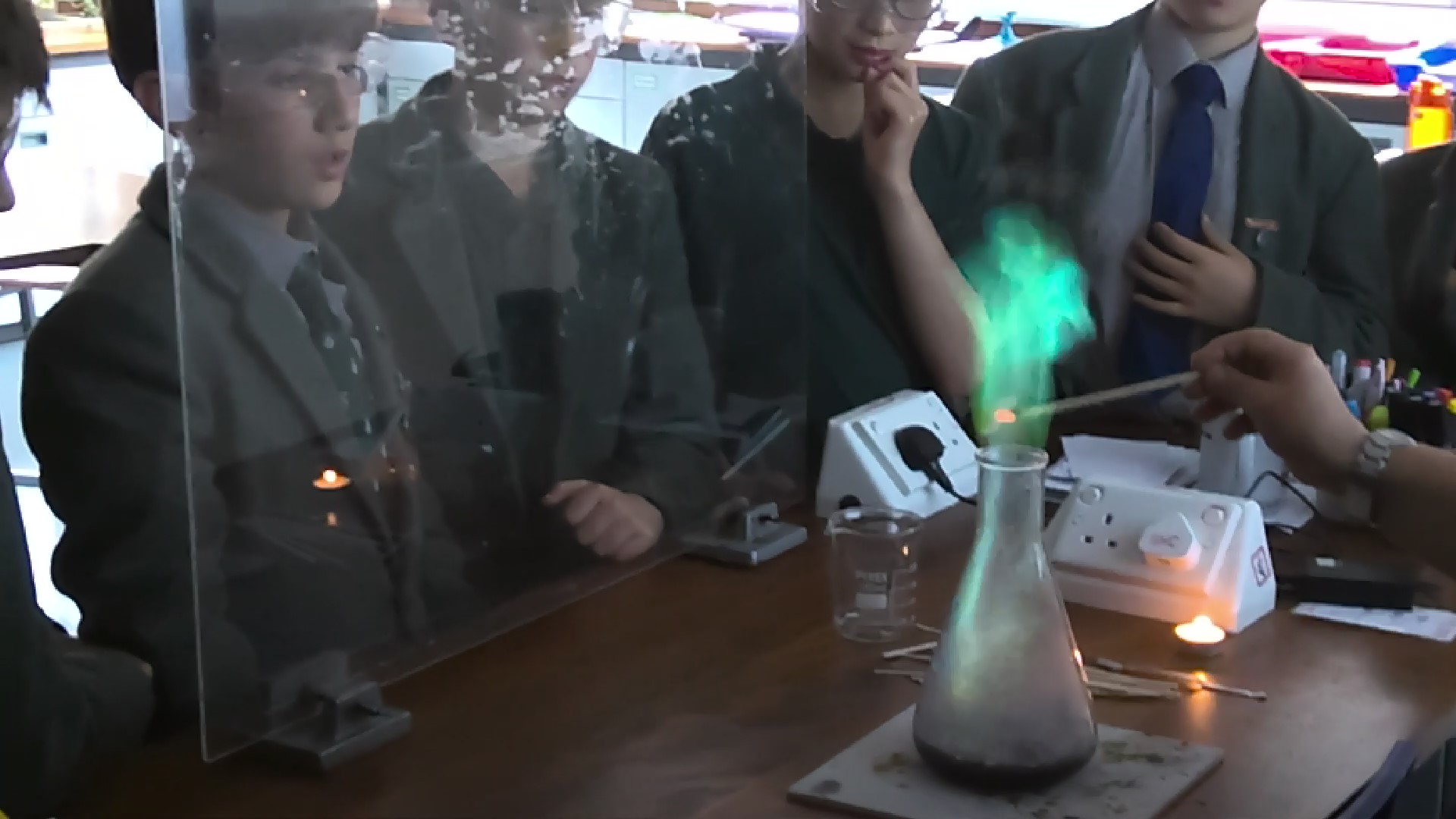
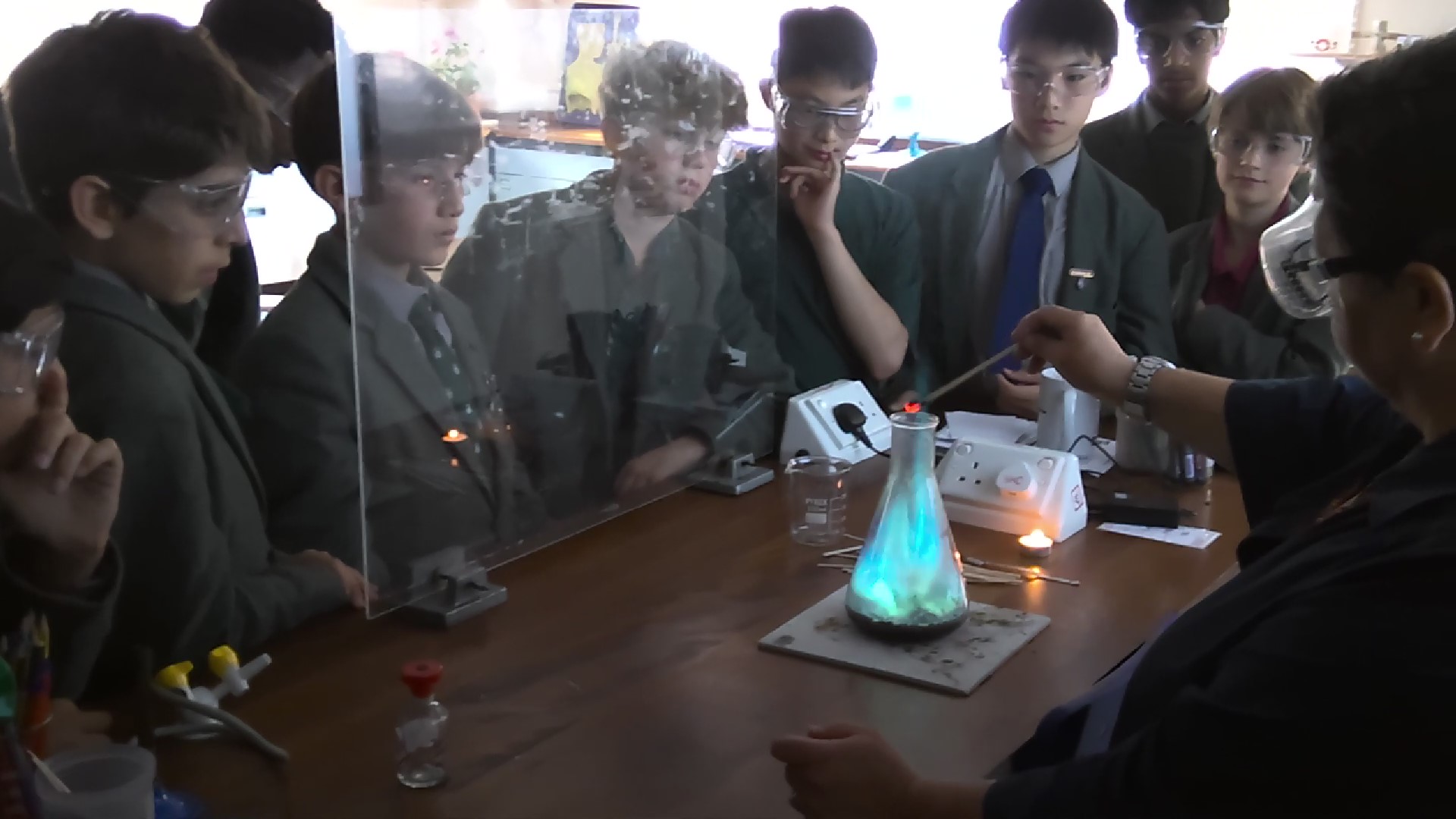
Bryony Carpenter
Science Teacher








